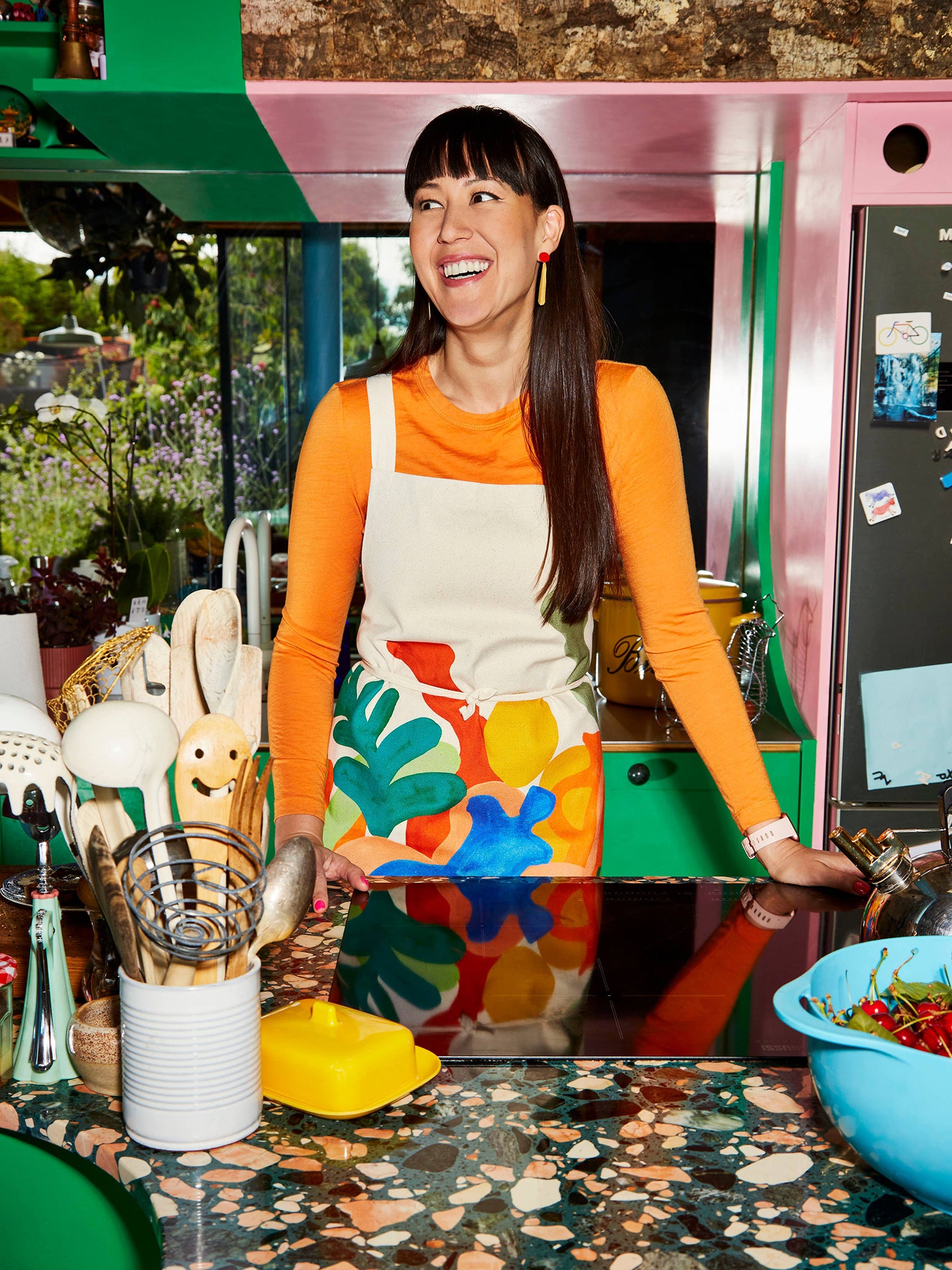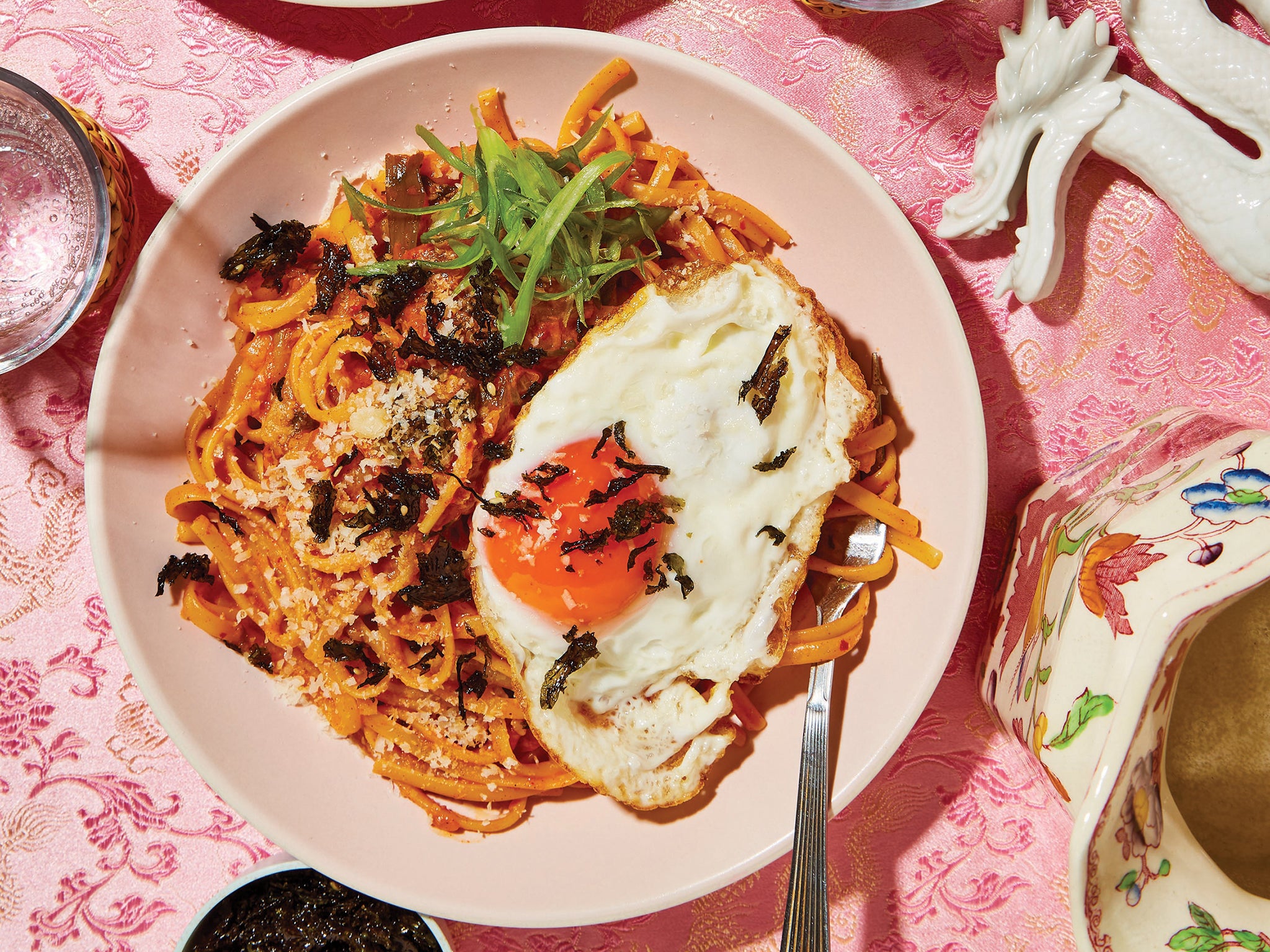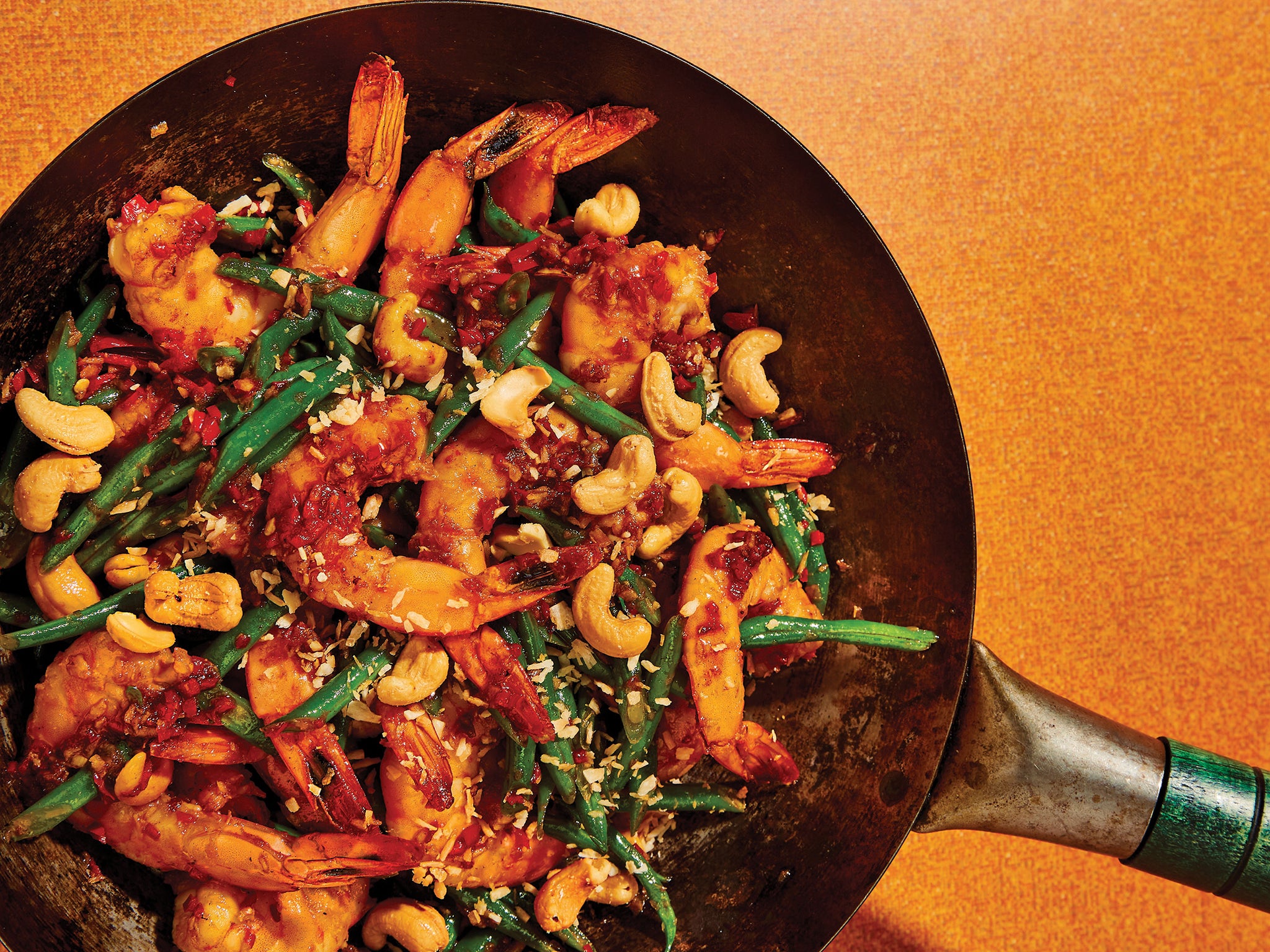Lara Lee: After having a baby, my everyday cooking kind of sucked
After hitting rock bottom, the Chinese-Indonesian chef tells Prudence Wade she was drawn to simple meals that back a punch, and these form the basis for her second cookbook

Your support helps us to tell the story
This election is still a dead heat, according to most polls. In a fight with such wafer-thin margins, we need reporters on the ground talking to the people Trump and Harris are courting. Your support allows us to keep sending journalists to the story.
The Independent is trusted by 27 million Americans from across the entire political spectrum every month. Unlike many other quality news outlets, we choose not to lock you out of our reporting and analysis with paywalls. But quality journalism must still be paid for.
Help us keep bring these critical stories to light. Your support makes all the difference.
Even professional chefs can sometimes lose their mojo – and that’s something Lara Lee discovered after having a baby.
Her son, Jonah, is now three, but back when he was six months old, the chef and caterer admits: “My everyday cooking kind of sucked.
“I was tired, I’d lost inspiration. It was fish fingers from the freezer, ready meals from the supermarket, takeaways – I wasn’t living my best food life. I felt I’d lost my mojo a little bit.”
She even remembers a “real rock bottom” moment when she bought a quiche you’re meant to heat up in the oven, and just ate it straight from the packet in a haze of tiredness.
“It was a turning point for me, where I was like: ‘That’s it, I’m getting back in the kitchen’,” the 39-year-old remembers. “So, on goes the apron and I’m like, ‘Right, what am I going to cook?'”
The food she was immediately drawn to were simple meals that packed a punch, and these form the basis for her second cookbook, A Splash Of Soy.
She says this book is “for not just tired mums, but for anyone who wants a quick and easy meal at the end of the working day”.
Lee is based in Australia and her father is Indonesian, and she adds: “Leaning into my Asian heritage, I wanted it to be really full of those beautiful sweet, sour, spicy, fragrant flavours that I love – really punchy, bold and the kind of food that wakes you up in the morning and gives you a skip in your step.

“But I also wanted it to be simple as well. I had this criteria, which was trying not to write recipes with more than 12 ingredients, or no more than two dirty pots and pans.”
Recipes range from kimchi, spring onion and sriracha cheese toasties and spicy cumin lamb skewers, to prawn and tofu pad thai and tamarind caramel brownies. Most ingredients are those you can get in your local supermarket – if it’s something you might need to go further afield for, Lee makes sure it’s worth your time.
Take instant tom yum paste, which “can transform your meal in seconds”, she says. “You have tom yum soup in 15 minutes, you can make a marinade for a chicken in five minutes – literally whack it on the chicken, roast it in the oven and make a tom yum chicken – or make a tom yum Bloody Mary. There are so many things you can do with that special ingredient.”
Lee says she “had lost the joy in cooking a little bit”, and writing the cookbook helped her “rediscover that again”.
While her first cookbook, Coconut & Sambal, published in 2020, was all about the Indonesian flavours of her family, for this one Lee has widened her net to capture recipes from across Southeast and East Asia.
Halfway through writing the book, she moved from London back home to Sydney, and this helped with her inspiration.
“Australia has the most magnificent food scene, particularly around Asian cuisine – across all kinds of budgets, across all types of regions,” she notes.
“Having access into the Australian hype and Asian food scene gave me lots of inspiration, because I think Asian Australians really pride themselves on doing that little bit of fusion – in terms of a slight modernisation on a very traditional technique or recipe.”

Lee says it also gave her the “freedom” to explore her own ideas – particularly when she’s eating out and trying dishes such as Vegemite curry with roti.
“It’s mind-blowing – you eat things like that, and it takes your mind into different places of what’s possible with food.
“It reminds you that traditional is wonderful – which is my first book – but fusion, which I think people used to think was a dirty word back in the day, is quite an exciting thing as well.”
That’s not to say every recipe Lee tested made it into the book. There were some dishes she wanted to honour in their traditional form, and that didn’t always fit into the timeframe she set for herself.
Take Thai green curry: “It didn’t make it into the book – I must have tested it nine or 10 times. I just couldn’t get it under 45 minutes for starters. To make a good one – actually, it’s going to take an hour 15.
“I realised, I can’t rush this. To rush it and to change it so much, it’s going to lose the essence of what it is. So, there’s a point where you have to say, I’m stepping away from this – even though I love you Thai green curry, and I really want you to be in there.”

There are plenty of other dishes to make up for the absence – including a colourful sections on salads.
In the book, Lee proudly proclaims herself “a salad person” – but her father refuses to eat it, unless it’s an Asian version.
So, what sets Asian salads apart?
“I find that an Asian salad is a hearty meal,” Lee muses. “Not in a stodgy way, but it feels like a complete meal in itself. This is a generalisation, but quite often the mixed leaf salad is the side dish when we go to restaurants, whereas in Asia it can quite often be as much of a main event.
“Examples I might give would be laab from Thailand or Laos – a beautiful minced meat salad. Or gado gado, which is full of proteins – you’ve got lovely boiiled eggs, potatoes, lots of lovely green vegetables and a really delicious, sweet peanut sauce – it’s really filling, it’s also very textural.”
Lee’s favourite salad to eat at the moment – although she’s still a bit iffy on whether it technically is a salad – is san choy bau – Chinese pork mince in crispy lettuce cups.
“It takes you on this journey of fragrance, but it’s really easy to cook – you just chuck it in the pan.
“I’m at the point now with my cooking – which I feel like on Australian MasterChef, they would probably go, ‘Don’t do it!’ – but garlic paste, ginger paste. I’m living for it right now.”
‘A Splash Of Soy: Everyday Food From Asia’ by Lara Lee (published by Bloomsbury Publishing, £22; photography by Louise Hagger).
Join our commenting forum
Join thought-provoking conversations, follow other Independent readers and see their replies
Comments